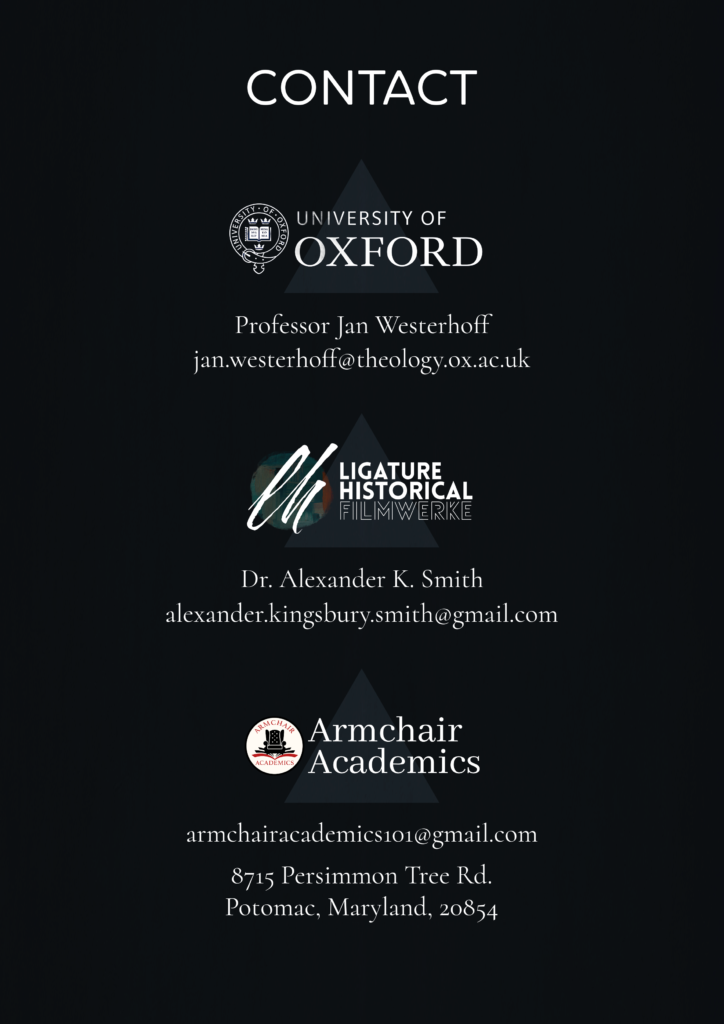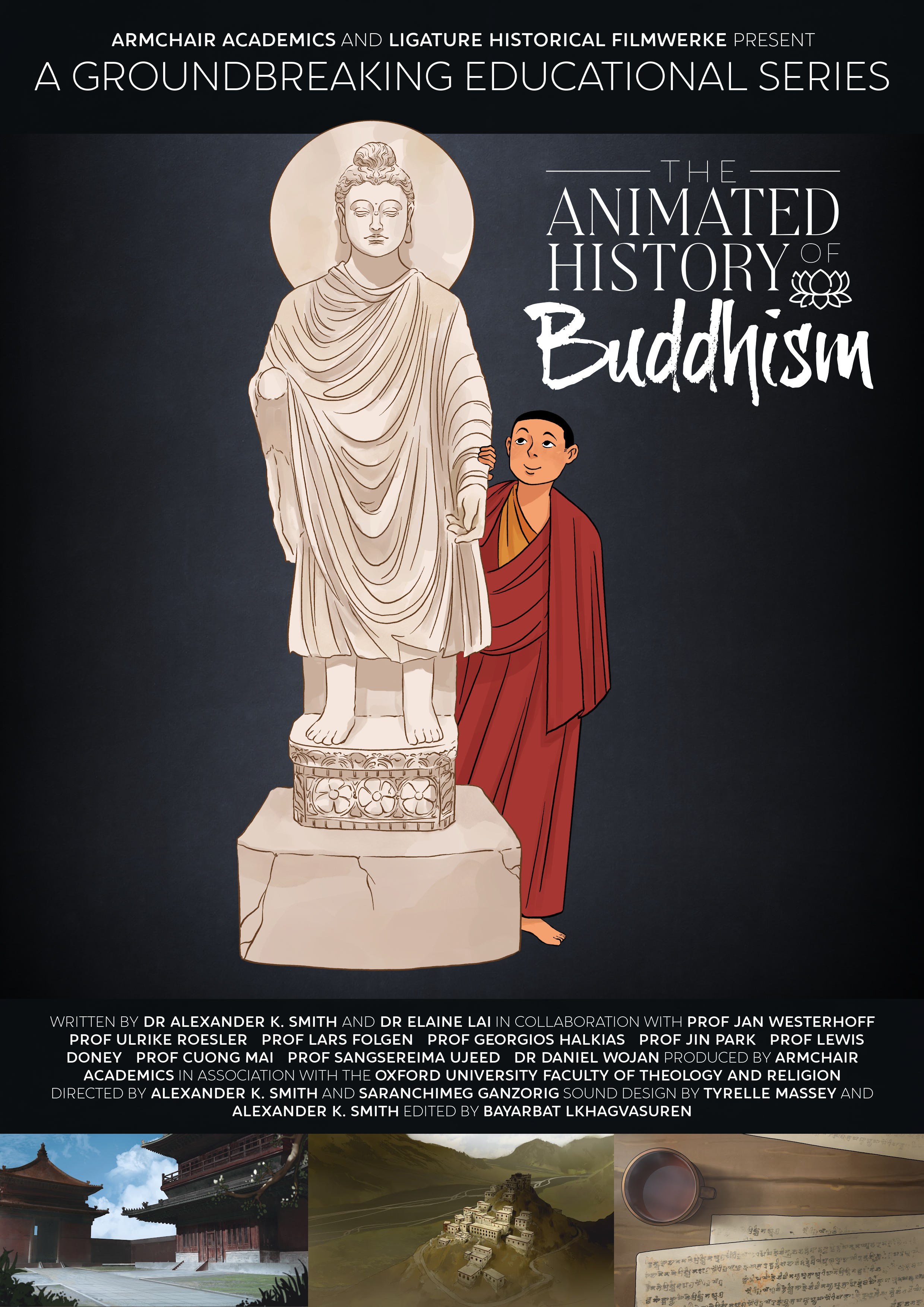The Animated History of Buddhism Initiative is an 18-episode historical documentary series that is currently in pre-production and seeking funding. Our work combines various approaches to traditional 2D animation with the research and writing of a multi-national group of scholars from universities across Europe and North America. Our goal is to create a groundbreaking resource in science communication that bridges the gap between the academic community and the public understanding of Buddhism. A printable version of our 2025 press kit can also be downloaded here.
Synopsis
The Animated History of Buddhism is an innovative educational initiative that seek to produce an academically grounded yet widely accessible public facing historical resource for the study and preservation of Buddhist traditions around the world. Using an engaging and culturally faithful art style, our combined academic and artistic team will create an 18-episode animated documentary series, beginning with the origins of Buddhism in the 6th century BCE and growing to explore the diffusion of Buddhist thought, practice, and institutions across South, Central, and East Asia.
Written in collaboration with specialists in Buddhist studies from universities across Europe and North America, each 20-minute episode will highlight the interplay between Buddhist traditions and local socio-political systems, examining how Buddhism shaped and was in turn shaped by the different nations and cultures to which it spread.
Language Versions
English – Narration by Alexander K. Smith

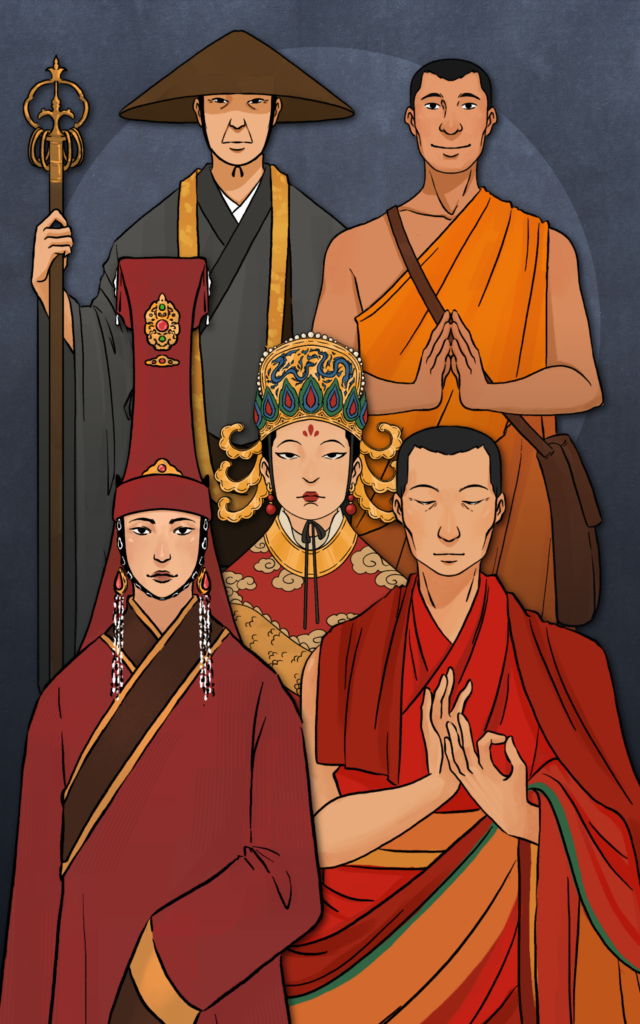
Our Art Style
The series will be animated in two distinct styles. The first, depicted in the panel to the left, is a realist style influenced by the tradition of Western anime-inspired animation. This approach foregrounds the material cultures of Buddhist traditions throughout time, emphasizing the historical evolution of monastic robes (kāṣāya) across different Buddhist schools, as well as highlighting the unique architectural styles and real-world locations inherent to each geographical setting.
To achieve this goal, we have formed a brain-trust composed of participating scholars and cultural consultants with whom the art team will work to produce historically accurate representations of the material cultures inherent to each setting. When historical accuracy is not possible (due, for example, to the lack of textual records or archaeological and artistic references), the art team will collaborate with the participating members of The Animated History of Buddhism brain-trust to find creative and culturally faithful approaches to representing locations and characters.
The series’ second animation style, depicted in the panels to the right, is considerably more abstract in tone. It will be realized using an approach to 2D hand-drawn animation that simplifies both character design and background design to achieve a ‘dream-like’ visual key. We intend to use this second style to represent selected episodes from Buddhism’s cultural history, including myths, folktales, and narratives translated from various Buddhist historiographical traditions
The shift from a realist to a more abstract style of animation is meant to signify to the viewer that we are moving into a different kind of narrative space — one which is not necessarily grounded in the meticulous details of materialist history; but which is nonetheless essential to developing a holistic understanding of Buddhist history across cultures.
By blending these two animation styles, we intend to draw the viewer into a braided narrative in which the material forces that shaped Buddhism over time (e.g. the social, economic, and political forces that influenced the development of Buddhism) co-exist and are woven together with a scholarly commentary on the ways in which different cultures and languages helped to define the distinct schools of Buddhism as they exist today.
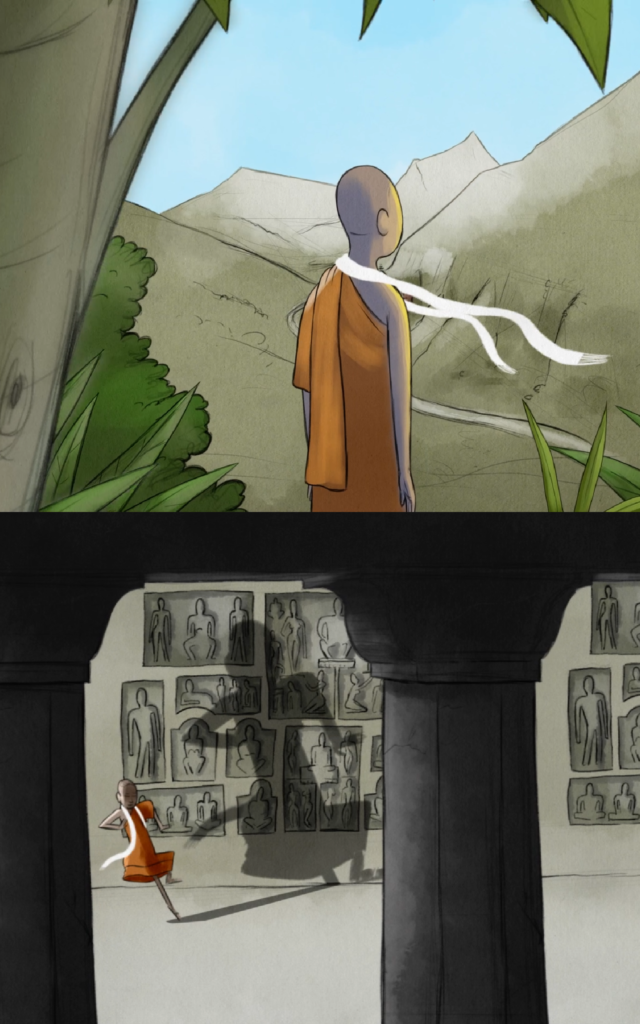

Additional Scholarship
At its core, the Animated History of Buddhism initiative aims to combine rigorous scholarship with a presentation of Buddhist history that is both visually and narratively compelling. With that in mind, as a supplement to the series, the Animated History of Buddhism team will also create a comprehensive digital archive of educational resources, including fully annotated bibliographies for each episode, expanded reading lists, study guides, and lesson plans, as well as produce a curated selection of filmed interviews with specialist historians and scholars of Buddhism from collaborating university programs. These materials will be paired with relevant episodes to create an easy-to-use archive of digital supplements that can be used by both students and educators. Together with the animated series, these resources will be made freely available to the public, hosted on a dedicated website under the domain name “animatedbuddhism.org”.
In addition to providing an historically accurate and easy-to-use resource for educators, this platform would serve as a highly accessible entry-point for students new to the history of Buddhism, as well as for general audiences who are broadly interested in the history of world religions.
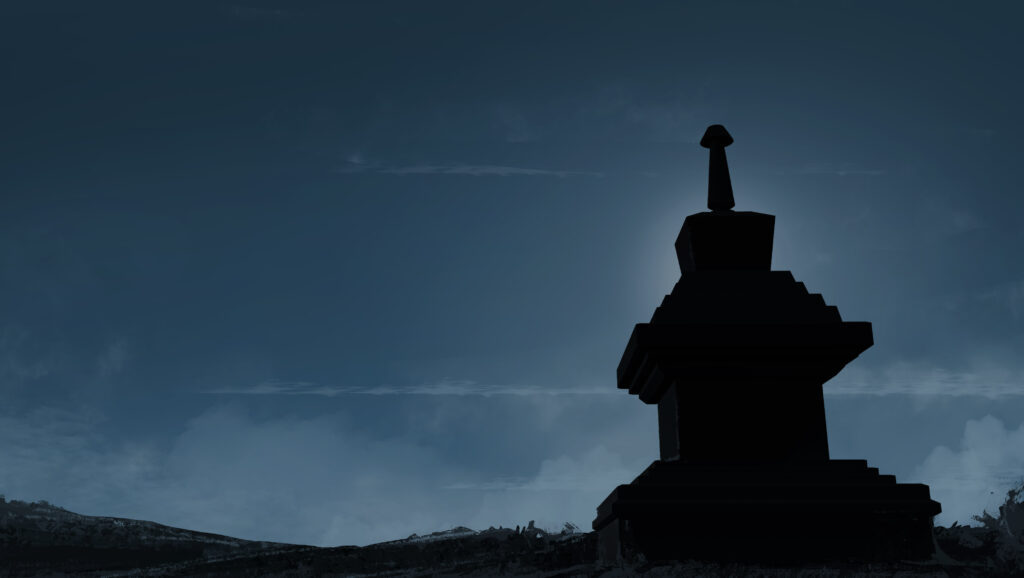
Director’s Note
The history of Buddhism is world history. It is part of our shared human story. Accurate resources for the study of that history should be available to everyone regardless of their budget or their educational background.
With that in mind, I have two main goals in producing the Animated History of Buddhism. The first is to create a rigorous and fun approach to learning about the history of Buddhism and the role that Buddhist traditions have played in shaping the history of Asia and the history of the world. The second is to raise the visibility of Buddhist discourses in creative spaces while, at the same time, providing a well-researched history that is accurate enough to be of service to the Buddhist Studies community as a resource and also compelling enough to pique the interest of audiences who are broadly interested in world history.
When it is released, my hope is that the Animated History of Buddhism will be nothing short of the single most accessible and comprehensive public-facing resource that has ever existed for the study of Buddhist history.

Our team

Alexander K. Smith
Lead Writer | Director
Alexander is a historian, socio-cultural anthropologist, and filmmaker. He holds a PhD in Tibetan and Himalayan Studies from the University of Paris, France (EPHE-PSL), and an MA from Oxford University. As a writer, director, and producer, he has worked on two documentary projects: a feature film, titled The Rise and Fall of the Tibetan Empire (2024), which is currently available on Tricycle: The Buddhist Review’s streaming service and The Animated History of Tibet (2023-2025), an animated historical documentary series, which is available to watch on YouTube.

Saranchimeg Ganzorig
Lead Animator
Saranchimeg is a talented 2D animator and illustrator. She has an MA in cartoons and Animation from Konju National University in South Korea and a BA from the Mongolian University of Science and Technology in Ulaanbaatar, Mongolia. This is her second animated series following her work as an animator and co-director on The Animated History of Tibet (2023-2025).

Elaine Lai
Co-Writer | Director
Elaine is a scholar of Buddhism and a storyteller. She holds a PhD from Stanford University, an MA from the University of Hong Kong, and is a graduate of the Beijing Film Academy. She currently works as a Lecturer for Stanford University and has written and produced two short films, two audio plays, two feature length screen plays, and three TV pilots that span the genres of comedy, drama, historical fiction, and AI ethics.
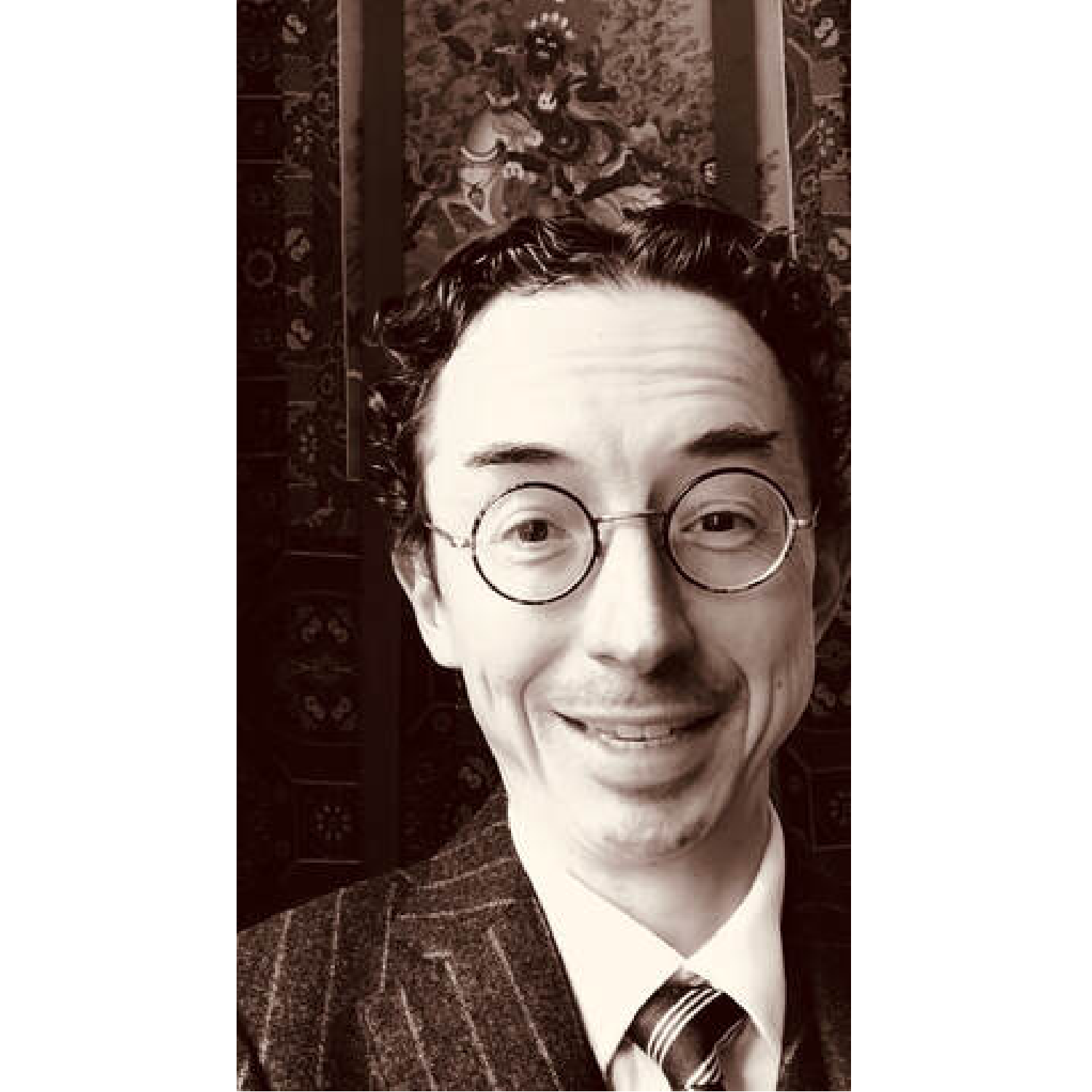
Jan Westerhoff
Co-Producer
Jan Westerhoff is Professor of Buddhist Philosophy and a Fellow of Lady Margaret Hall at the University of Oxford. He holds doctorates from the University of Cambridge and the School of Oriental and African Studies, University of London. In addition to his teaching and research, he is the author of numerous articles and books on the history of Buddhism, including, most recently: The Non-Existence of the Real World (2020), The Golden Age of Indian Buddhist Philosophy (2018), and Nāgārjuna’s Madhyamaka: A Philosophical Introduction (2009).
– Participating Scholars –
Professor Jan Westerhoff
(Oxford University)
Jan Westerhoff is Professor of Buddhist Philosophy at the University of Oxford. His research focuses on the Buddhist philosophical traditions of India and Tibet, especially on Madhyamaka. His books include Ontological Categories (2005), Nāgārjuna’s Madhyamaka (2009), The Dispeller of Disputes (2010), Twelve Examples of Illusion (2010), Reality: A Very Short Introduction (2011), and The Golden Age of Indian Buddhist Philosophy (2018), all published by Oxford University Press.
Professor Ulrike Roesler
(Oxford University)
Ulrike Roesler obtained a PhD in Indian Studies from the University of Munster, Germany, and her Habilitation in Tibetan Studies from the University of Munich. Roesler’s research interests are in the early history of Buddhism in Tibet, interactions between India and Tibet, Tibetan biographical writing, narrative literature, and the notion of sacred landscapes in the Himalayas. Her most recent book publication is the volume Lives Lived, Lives Imagined: Biography in the Buddhist Traditions (Wisdom Publications 2010).
Professor Jin Park
(American University)
Park currently serves as President of the American Academy of Religion and President of the North American Korean Philosophy Association. She previously served as President of the Society for Asian Comparative Philosophy from 2018 to 2019. Parks research in Buddhism focuses on the Zen and Huayan schools of East Asian Buddhism, with particular attention to the issues of language, violence, and ethics. In her comparative studies, she engages Zen and Huayan Buddhism alongside postmodern thought in continental philosophy.
Professor Georgios Halkias
(University of Hong Kong)
Georgios T. Halkias is a Greek Scholar of Oriental Studies with publications on Tibetan Buddhism, Himalayan regions, and cross-cultural contacts between Hellenism and Buddhism. He is currently an associate professor of Buddhist Studies at the University of Hong Kong and co-editor in chief of the Oxford Encyclopedia of Buddhism.
Professor Lars Folgen
(University of Arizona)
Lars Fogelin is Associate Professor of Anthropology at the University of Arizona. He is a specialist in the archaeology of Buddhism in South Asia. He also engages in broader research on the archaeology of religion, architecture and the application of the philosophy of science to archaeology. He is the author of The Archaeology of Early Buddhism (2006) and An Archaeological History of Indian Buddhism (2015) among other works.
Professor Cuong Mai
(Appalachian State University)
Cuong Mai specializes in the religions of Asia, particularly the history of Chinese and Vietnamese Buddhism. He completed his undergraduate degree in Religious Studies at Columbia University, an MA at the University of Hawaii, and a PhD in Religious Studies at Indiana University, Bloomington. He previously taught at the University of Vermont in the Department of Religion.
Professor Sangseraima Ujeed
(University of Michigan)
Sangseraima Ujeed, Assistant Professor of Tibetan Buddhism, University of Michigan, Ann Arbor, received her MSt and DPhil degrees in Oriental Studies from the Department of Tibetan and Himalayan Studies, Faculty of Oriental Studies, University of Oxford. Her main research focus is the trans-national, trans-regional, and cross-cultural aspects of Buddhism, lineage, translation, monastic and reincarnation networks, and identity in Tibet and Mongolia in the Early Modern Period, with an emphasis on the contributions made by ethnically Mongolian monk scholars.
Prof. Vensa Wallace
(UCSB)
Vesna A. Wallace teaches South Asian and Inner Asian religions and advanced Sanskrit Courses in the Department of Religious Studies at UCSB. Her two areas of specialization are Indian Buddhism, particularly Mahāyāna and Vajrayāna traditions, and Mongolian Buddhism. She has authored and translated four books related to Indian Buddhism, three of which pertain to the Kalachakra tantric tradition in India, and has published numerous articles on Indian and Mongolian Buddhism. Her most recent book is an edited volume on Mongolian Buddhism, titled Buddhism in Mongolian Culture, History, and Society.
Prof. Fabio Rambelli (University of California Santa Barbara)
Fabio Rambelli is professor of Japanese religions and the International Shinto Foundation endowed chair in Shinto Studies at the University of California, Santa Barbara. His books include Buddhist Materiality (2007), The Sea and the Sacred in Japan: Aspects of Maritime Religion (2018), and Spirits and Animism in Contemporary Japan (2019). He works at the intersection of philosophical discourses, material practices, and everyday life in premodern Japan.
Dr. Daniel Wojahn
(Oxford University)
Daniel Wojahn recently finished his PhD in Tibetan and Himalayan studies at the University of Oxford, where he was a Leverhulme scholarship holder and a 2023 Robert H. N. Ho Family Foundation Dissertation Fellow in Buddhist studies. He received his baccalaureate and MA in Indology and Central Asian Studies from Leipzig University, Germany. He is also the digital content lead of the Oral History of Tibetan Studies project. Daniel’s current research focuses on the intersection of power and law during the Yuan-Sakya period in pre-modern Central Tibet.
Dr. Dominic Steavu (University of California Santa Barbara)
Is a faculty member in the Department of East Asian Languages and Cultural Studies at the University of California Santa Barabara. His area of specialization is the history of Daoism and Chinese Buddhism with a focus on the history of medicine. He has written numerous books and articles on East Asian religions, including, most recently, The Writ of the Three Sovereigns: From Local Lore to institutional Daoism (2019) and Transforming the Void: Embryological Discourse and Reproductive Symbolism in East Asian Religions (2016).
